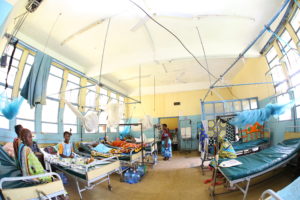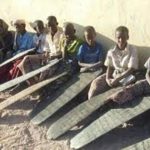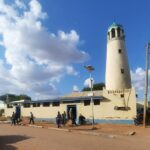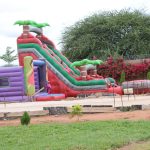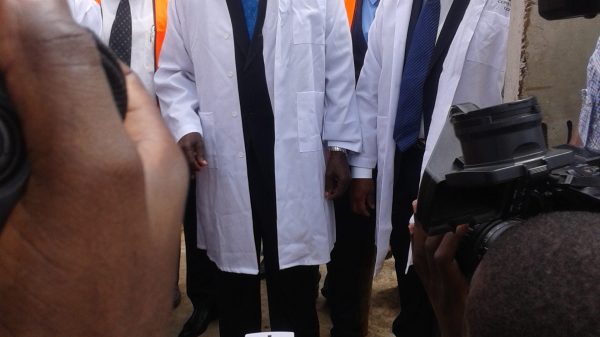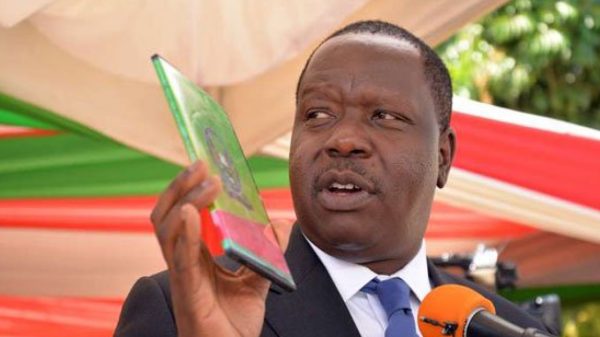By Abdullahi Jamaa
From the very heart of a village in Wajir town, the voices of Quran students emanate and echo around the sleepy sprawling settlement.
“This traditional system of Islamic education dates back to the times of our beloved Prophet (SAW),” teacher Maalim Nur Osman affirms.
“We feel it has played a remarkable role in mentoring young Muslims to shape their destiny and to take part in the propagation of Islam.”
The Quran schools, known as Dugsi, are mostly housed under makeshift structures and students operate in study circle very much popular in mosques.
Study materials are made of readily available products. Charcoal for instance is crushed to make a black ink for writing.
When this writer visited the Dugsi, Mr. Osman sat on a small traditional chair with more than 70 students working in groups to encourage interpersonal interaction and relations.
“Over the years, Dugsi had remained to operate in a simple way that has made an enthusiastic environment for memorizing the Quran, which is the cornerstone of Islamic education,” says Osman.
“It will take at least three years for a child to complete the memorization of whole of Quran, this will mould the pupil’s life and for sure he/she will be a religious person.”
His school has over the past 30 years shaped many children in the village to learn the basics of Islam.
Reciting verses from the Muslim holy book written in golden letters on wooden slates, light sweats are beading from the forehead of the young boys and girls who have been studying to memorize the Quran for the past four hours.
“The struggle here is to learn the Holy Book first,” says Ahmed Ali, 13, one of the students.
“We take Quran lessons twice every day.”
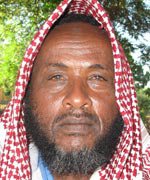
Dugsis are the bedrock of a system of Islamic education that flourished in many parts of Northeastern Kenya predominantly inhabited by Sunni Somalis.
Islamic historians say schools typical of the Somali Dugsi have existed in Middle East and Africa since the 7th century AD.
It shares a set of historical roots that can be traced back to Arabia and the education practice of prophet Muhammad (SAW).
Filling Gaps
In the absence of state funding to support Islamic education, the Somali community here assumes the role of educating their children.
“Dugsi is the most reliable informal way to teach Islam among the impoverished society,” Sheikh Abdulwahab Sheikh Issack, a former official of Kenya Council of Imams and Preachers, said.
“It offers a cheaper access to education, particularly for Islamic studies.”
The Quran schools have carved a niche for itself in mapping Islamic values.
Apart from offering an efficient elementary teaching of both the Quran and the Arabic language, many recognize these kinds of schools as a critical element of value transfer and Islamic socialization.
They provide Islamic education for children, thereby filling a clear religious and social role in the community, and acting as agents and preservation of change.
“The goal is to address shortcomings in religious studies,” says Osman, the teacher.
And even as new forms of diffusing Islamic Knowledge gained momentum in recent years, including the more formal Madarasas, the Dugsi stays put.
“We anticipate that the Dugsi system will be here forever,” says Sheikh Mohamed Abdi, another Dugsi teacher.
He cited the community’s support for the traditional schools with Dugsi teachers working entirely for free or sometimes for a little fee per student.
The surprisingly high number of Somalis who are able to recite and memorize the entire Quran is a testimony of the glaring success.
“We can attribute this to the role of the Dugsi because every child in the community must pass and learn at a Dugsi, this is the first stage in every child,” says Sheikh Issack.
For students, the Dugsi is a stepping stone to further their Islamic knowledge giving them an opportunity to shape their Islamic career.
“I want to be a Kadhi,” says an enterprising 13-year- Mohamed Ali.
“I must learn the Quran that is why I have to attend the Dugsi lessons here.”
This story first appeared at ISLAMONLINE.NET


